Highlights
Ishikawa Mao was born in 1953 in the village of Ogimi in Okinawa Prefecture. She began photography in the 1970s, studying under Tomatsu Shomei at the Workshop Photography School in 1974. Working based in Okinawa, Ishikawa’s practice involves photography that is intimately related to humanity, focussing on people connected to Okinawa. She extracts real portrayals of individuals from her subjects through interviews in which she listens closely and becomes more than just an interviewer, revealing the reality of Okinawa from a different, fresh perspective.
Ishikawa’s approach of taking advantage of chance encounters to photo people while developing a rapport that is closer than the usual photographer-subject relationship is something she established early on. This can be seen in Red Flower: The Women of Okinawa, in which she worked at a bar catering exclusively to African American soldiers in the 1970s and photographed her coworkers and their wild lifestyles, and Life in Philly, in which she visited the hometown of an African American she met at the time.

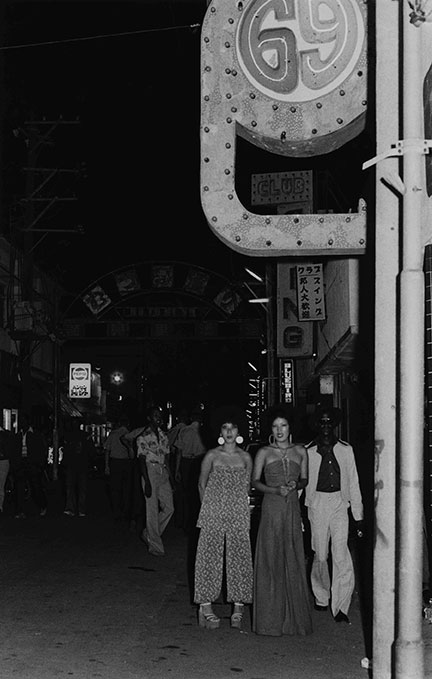
Based in Okinawa and very active throughout the world, covering people and events related to Japan’s former military forces, its current Self-Defense Forces, and the US military, Ishikawa has consistently maintained a distinctive perspective in which she steadfastly approaches her subjects with a focus on their humanity.
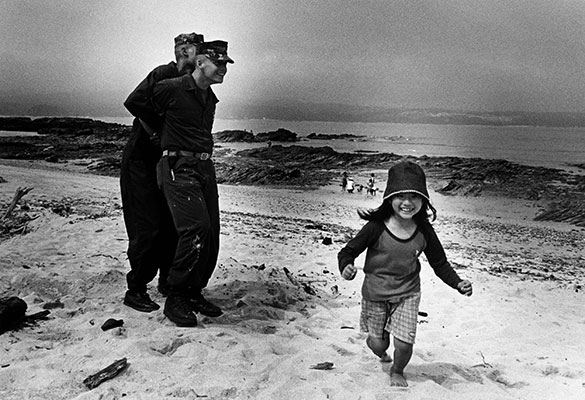
On March 3 of the lunar calendar, the base is opened to local residents. Nago City (Camp Schwab), April 2002.
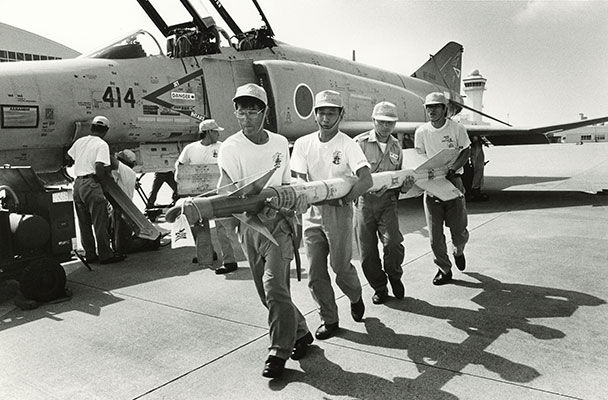
Soldiers carrying missiles during a military exercise. September 9, 1993.
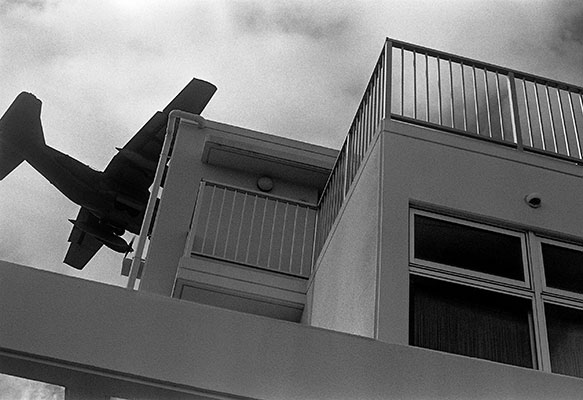
A U.S. military aircraft descends, barely over a residential area, towards Futenma Airfield. Ueōjana, Ginowan City, July 2009.
She continues to search for and cover relevant situations today, recently presenting series that could perhaps be considered creative photography, such as Morika’s Dreams and The Great Ryukyu Photo Scroll, which were prompted by Here’s What the Japanese Flag Means to Me. In each series, she maintains an artistic practice based on building trust between her and her subjects.
This exhibition is an opportunity to look back on Ishikawa Mao’s career, from the prints she exhibited in her early years in the 1970s to her current works. It presents the distinctive artistic eye with regard to Okinawa that she has developed over the years, displaying a total of over 60 photos selected from her series of works, including her latest works and recent works in The Great Ryukyu Photo Scroll series that the artist has put the most effort into in recent years.
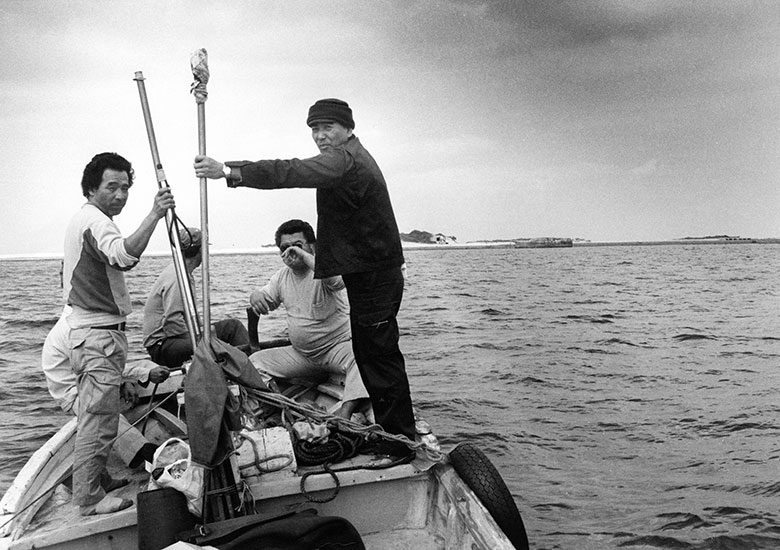
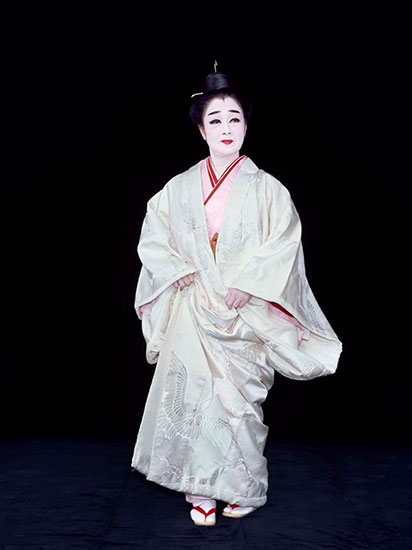
Ms. Kaneshiro Michiko
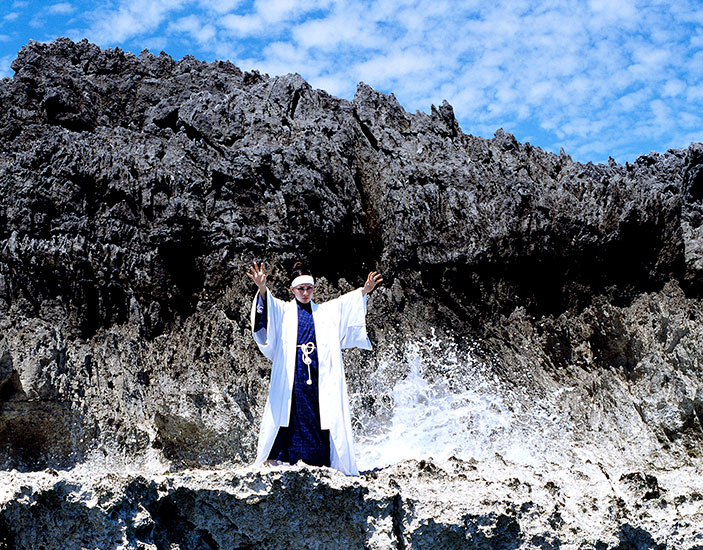
“Satsuma, don't come!” A Kaminchu (OKinawan priestess) praying.
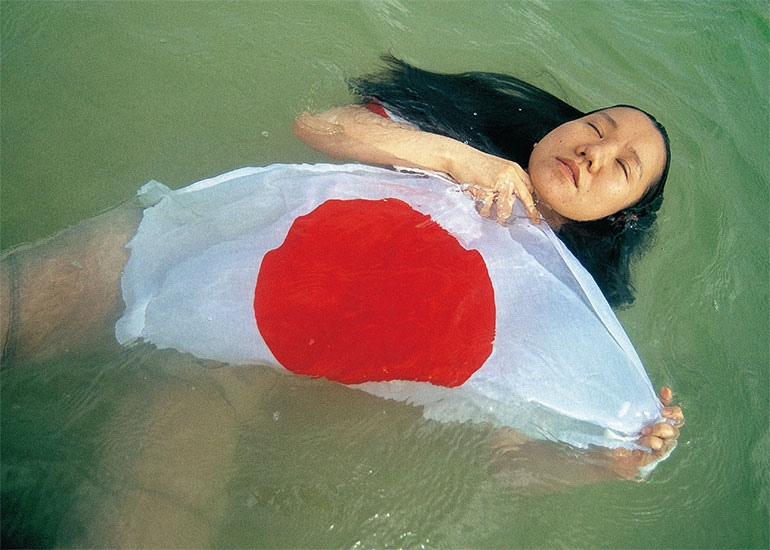
“I like thinking and persevering to move my mind forward while being swallowed by the waves, in its ebbs and flows. Until then, I had been living just for the fun of it. Some children stop there, but I am different. I wanted to move forward, together with the children of Nago and Japan. For some reason, I feel safe in the sea.” Oshiro Wakana (age 26), theater school student, Nago City, Okinawa, June 8, 2008.




